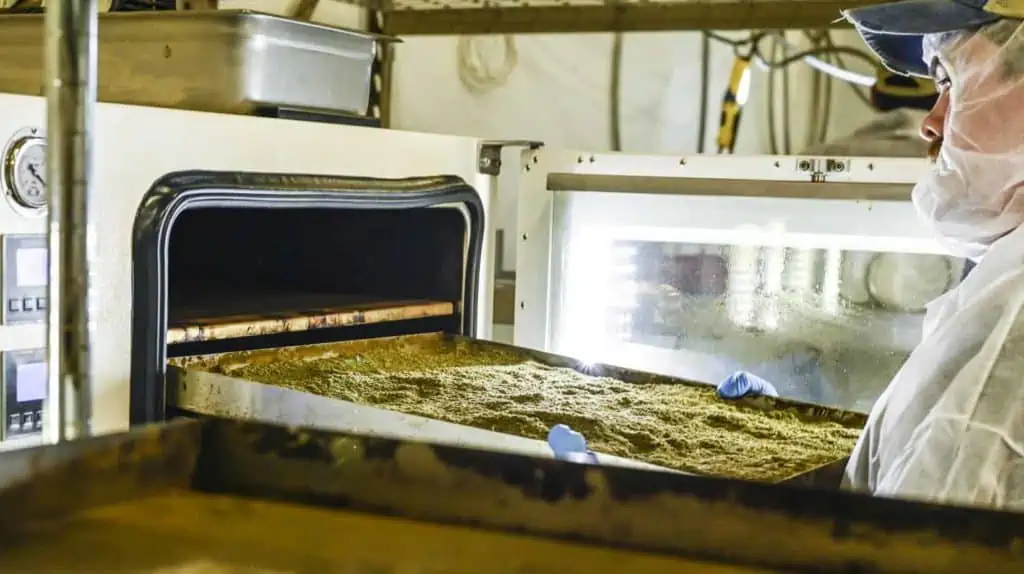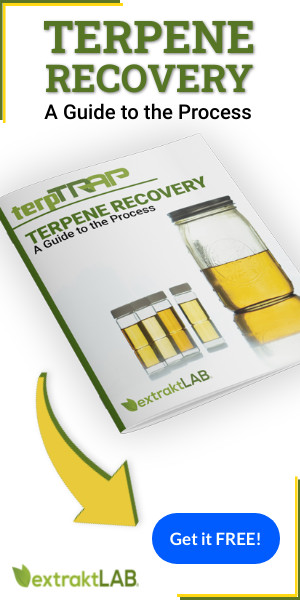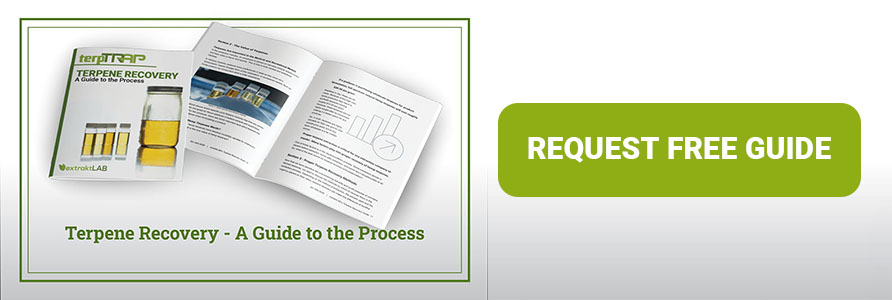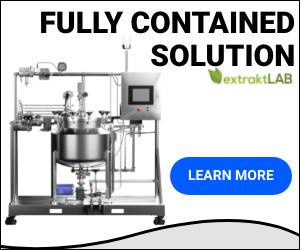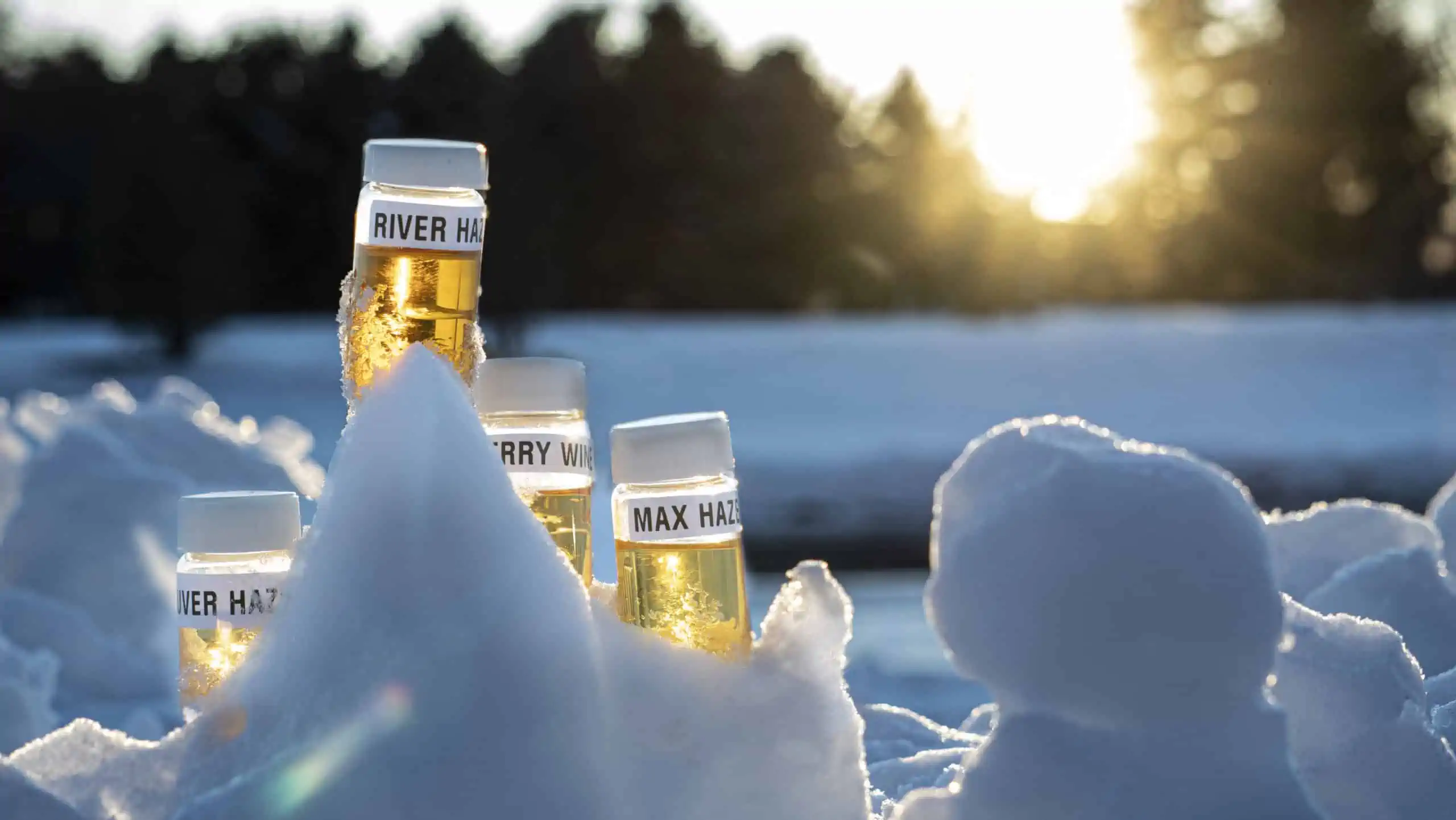
If it weren’t for hemp terpenes, any product derived from hemp would be largely undesirable due to a lack of flavor and aroma – let alone the lack of synergy between terps and cannabinoids. For those reasons, it is vital to make sure that terpene extraction is a primary consideration for hemp producers. In this article, we will discuss the best way to ensure that terpene extraction is thoroughly explained so that preservation and formulation of hemp terpenes is optimal.
Hemp Terpenes: Extraction Processes
What Are Hemp Terpenes?
While many CBD products are known and widely talked about, the importance of hemp terpenes is often overlooked. This information will delve into terpene types and exactly what they are, uses, advantages, and extraction processes.
Terpenes in hemp plant flowers are a key ingredient to CBD products and the hemp plant itself. Hemp terpenes are the natural components that create the primary scent and aroma of hemp. They consist of the fragrant molecules responsible for the smell, flavor, and supplemental physical effects of CBD products.
For example, if the product purchased gives off a lavender smell, terpenes are the hemp properties responsible for creating the floral scent. Hemp terpenes play a large part in plant protection, as an environmental role, and can further add to the natural medicinal properties in hemp that affect the human body. They can often increase the potency and overall results of the hemp plant.
Terpenes in hemp flowers can vary in prices. Full-Spectrum terpenes maintain most of the natural properties found in the hemp plant. Through proper extraction, a lot of the helpful, medicinal agents are preserved. These can range from $20-$30 per gram of CBD product, which is on the high-cost end of the spectrum for terpenes.
Synthetic terpenes may be an option for those who still want benefits but are comfortable with less of the natural components being present in their product. These terpenes can be purchased at $10-$20 per gram of CBD supplies.
Types of CBD Terpenes
Myrcene is one of the most common types of hemp terpenes. The aroma can range from a dark, rustic scent to a floral or sweet, fruity smell. Benefits to this specific terpene are primarily physical and may cause relaxation the body.
Limonene is another prominent hemp terpene. Its aromatic profile consists of sweet, citrus scents that mostly resemble lemon. Limonene is often used in a variety of cleaning products when it’s not in CBD oils, tinctures, sprays, etc. Health advantages exist as well including potential mood stabilization and reduced stress when ingesting this terpene.
The next most prolific terpene is Linalool. This terpene contains floral, spicy, and earthy fragrances like lavender. Linalool can potentially provide aid to consumers with seizure disorders, cancer, and insomnia. If you have any concerns regarding picking the right CBD terpene product for you, talk to an expert today.
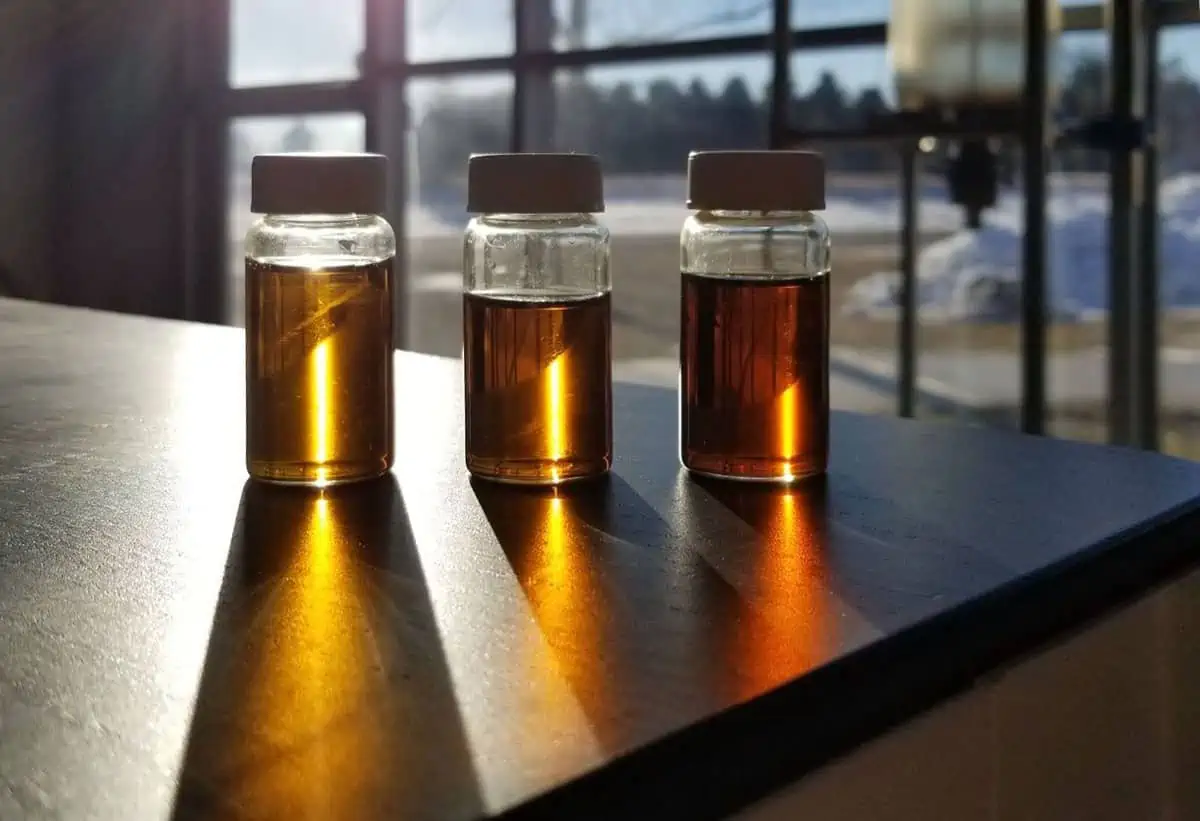
How Can Hemp Terpenes Be Used
Hemp terpenes can be used to create and produce a variety of valuable CBD products. CBD products come in a range of types. Tinctures and oils containing terpenes come in liquid form and can be administered by using a dropper, so the consumer has total control of the amount.
Alternatively, industrial hemp farm terpenes in CBD products may be dispensed in a spray bottle. With this CBD terpene product, a greater expanse of area may be covered at once. Ask for a live demo to fully understand how to dispense your CBD product in the most beneficial way.
Hemp Terpenes Benefits and Advantages
An advantage of hemp terpenes in CBD products is a synergistic phenomenon called the entourage effect. Terpenes are the scent-filled molecules in the hemp plant, while CBD (cannabinoids) are the plant properties that may allow for beneficial effects to occur within the consumer.
However, it is now known that terpenes also play a large part in the overall advantages of a hemp plant. The entourage effect takes place when both of these medicinal plant properties within CBD and terpenes combine. A tandem complementary relationship is the result.
Terpenes and CBD work better and have a greater potency when used in conjunction. All effects and advantages of the hemp plant are amplified when terpenes and CBD bind and mutually coexist.
Hemp terpene benefits are multitudinous. As mentioned previously, individuals may experience pain alleviation, stress and anxiety reduction, and mood stabilization from terpenes. Also, terpenes may help consumers with disorders like epilepsy or insomnia and may even assist with reducing pain in severe diseases.
Certain terpenes can aid in balancing energy levels. Also, consumers have reported that terpenes can increase blood flow, enhance cortical activity, kill respiratory pathogens, and increase collagen in the skin. Hemp terpene benefits include mental, physical, and neurological components.
The effects may vary, depending on the type of terpene. Industrial hemp farm terpenes suggest that Myrcene and Linalool are good choices when the consumer needs physical and mental relaxation, while Limonene may increase energy levels. Terpenes have a huge impact on the CBD industry, due to their many benefits.
Extraction Process of Hemp Terpenes
One reason a customer may choose to process hemp terpenes is to produce the most fragrant, dynamic CBD product possible. There are several traditional methods one may follow when choosing a terpene extraction process or one may follow extraktLAB’s preferred TerpTRAP terpene collection method and equipment.
Distillation, Hexane, and Ethanol Terpene Extraction Methods
One extraction method involves steam distillation. The steam does not fully dilute the terpenes, but instead aids in evaporating all unnecessary components to create a mostly natural terpene. However, this method yields very little product in comparison to others.
The hexane extraction method utilizes its own chemical properties. The hexane solvent preserves vital hemp terpenes, while eliminating any unnecessary particles. Since Hexane has fats and lipids, further dilution and freezing needs to occur for forty-eight hours to get the terpenes to a smoother consistency.
The hexane method takes longer and can produce a less consistent product, if not properly diluted.
The ethanol extraction method uses an alcohol variant and added heat over a long duration of time. A film evaporator can be used to separate the alcohol from other compounds. The heat degrades the organic compounds of terpenes.
This process causes hemp terpenes to lose much of their natural benefits. Ethanol extracts almost all biomass from the terpene, so chemical contamination may be likely to occur as well.
Also, the flavor and taste components may diminish and, unlike in isolated tinctures, the consumer is unable to go back and adjust the flavor profile to make it more palatable.
TerpTRAP Terpene Collection Method: Decarboxylation Before Extraction
Hemp terpenes can be extracted through another, more effective method. If you use the extraktLAB process, the consumer should collect and separate CBD terpenes before extraction to better maintain their quality.
While many processors resort to collecting their terpenes during or after the extraction process, this can lead to degraded terpenes, or the need for adding synthetic terpenes during product formulation.
While this may result in a similar end goal, the extraktLAB method is a productive way to collect your terpenes prior to extraction, resulting in fresh, high quality terpenes that can be sold, or used in product formulations.
This method is done during decarboxylation before the extraction process. Ground hemp biomass is added to vacuum ovens used for the decarb process.
Attached to those ovens is a cold trap collector called the TerpTRAP. During the decarb process, vacuum pressure lowers the necessary temperature for the terpenes to volatilize and evaporate from the biomass. This significantly lowers the possibility of damaged terpenes before they are collected.
The connected TerpTRAP is a cold trap condensation unit that collects the volatilized terpenes and re-condenses them into a liquid form. These terpenes are the freshest available from hemp plant that can be added to products downline.
How Much are Hemp Terpenes Worth?
As stated previously, hemp terpenes have become incredibly valuable for creating any CBD product. But, what is the true value of hemp terpenes? If a producer is purchasing wholesale terpenes for product formulation, full spectrum natural hemp terpenes will cost roughly $20-30 per gram. Needless to say, these can be costly.
Because of this high cost, some producers may resort to synthetic terpenes running roughly $10-20 per gram. However, these terpenes are not highly sought after by consumers making it a lesser option for any producer.
So, in truth, terpenes are highly valuable for their use and for their overall price point, but to buy them wholesale is a far costlier choice. This is why proper terpene extraction is critical for any extraction company to master, and there are many factors that play into proper extraction of hemp terpenes.
One of those factors is in the decarboxylation process. Some extractors decide to decarb before extraction, some after extraction, and some don’t decarboxylate at all. So, what is the best choice for terpene extraction and preservation?
Decarboxylation Before or After Extraction for Hemp Terpenes?
While some may disagree, it is not required that you decarb your biomass before CO2 or ethanol extraction. Decarboxylation, or decarbing as it is commonly referred to, is a process that converts the acidic form of cannabinoid to a neutral form. Decarbing makes the cannabinoid more soluble in the solvent and therefore improves the time for extraction. CO2 is capable of extracting acidic forms of cannabinoids, however since the acidic form is much less soluble in CO2, it takes longer to extract from the biomass.
A small amount of ethanol such as 5% can be added to the CO2 stream to improve the time to extract CBDA oil or THCA.
If your plan is to produce distillate or CBD isolate, then you will always need to decarboxylate. Either you decarboxylate the oil after you extract it or you decarboxylate the input biomass.
One advantage of decarboxylating the biomass before extraction is that you will also be able to harvest terpenes from the biomass directly without a lot of processing. This preserves the essence of the plant so that it can be used for flavor and aroma in your formulation. This is a huge advantage for decarboxylating the biomass rather than decarboxylating the extracted CBD oil after the extraction process.
What Happens to Hemp Terpene Profiles in CO2 Extraction vs Ethanol Extraction?
Hemp terpenes are extracted by both ethanol and CO2. Here are the key differences in the terpene profiles of a CO2 extracted oil versus ethanol extraction.
- Ethanol will extract most of the terpenes that are in the biomass.
- Ethanol will extract most all of the biomass cellular material, fats, waxes, and contaminants.
- In order to get the ethanol out of the extract, a falling film evaporator is used.
- Terpenes that make up the aroma (low boiling point molecules) evaporate with the ethanol.
- Terpenes that remain in the oil typically break down easily but many terpene profiles are left in the remaining oil.
- This oil is not potent, is pitch black, and really does not smell good. Distillation is typically required as a secondary purification step..
What Method Is Best For Terpene Extraction?
Here are some things to keep in mind if you are an ethanol extractor:
- In ethanol extraction, removal of the ethanol is a process that requires a significant amount of heat over a long period of time. This heat exposure will degrade the terpenes significantly. Many of the terpenes during this process are co-distilled or are destroyed in the process. The oil from this process is typically dark black and does not taste very good. The aroma profile is also not very desirable due to the breakdown of the terpene profile. The use of a crude extract for the tincture it’s not desirable because it doesn’t taste very good, doesn’t smell very good, and it also may contain high levels of psychoactive cannabinoids .
- Once the ethanol has been removed from the ethanol extract, the oil typically is introduced to a distillation process which removes the remaining terpenes. If your intent is to use distillate for your tincture, then you will have to find a way to add some terpenes to that tincture. The only resort is to purchase synthetic terpenes. you will also need to figure out how to reduce the amount of psychoactive cannabinoids.
- One other thing that needs to be considered is that if you do not distill the ethanol extract, it is very likely that you will have a significant amount of chemical contaminants in your extract. This is especially true if you are using denatured ethanol for your extraction process.
In contrast, CO2 extraction is far superior in terms of terpene profile preservation:
- If you use the extraktlab process, you will start by harvesting the terpenes before CO2 extraction. This preserves many of the low boiling terpenes that are unique in significant to the strain hemp that you are extracting.
- You may also use subcritical CO2 in order to produce soupy mixtures of terpenes, cannabinoids and waxes. These terpy mixtures are typically very desirable for vapor pens but are not very desirable for the purpose of formulation. Because they have cannabinoids and waxes in them, using them as a way to introduce terpenes to a formulation is much more difficult to do and reproduce in practice.
- The CO2 extraction also avoids the issues related to chemical contaminants that come from the use of denatured ethanol.
In summary, call CO2 extraction and ethanol extraction can produce desirable extracts. However, CO2 extraction has an edge over ethanol extraction when it comes to the preservation of the hemp terpene profiles and the avoidance of risk related to chemical contaminants.
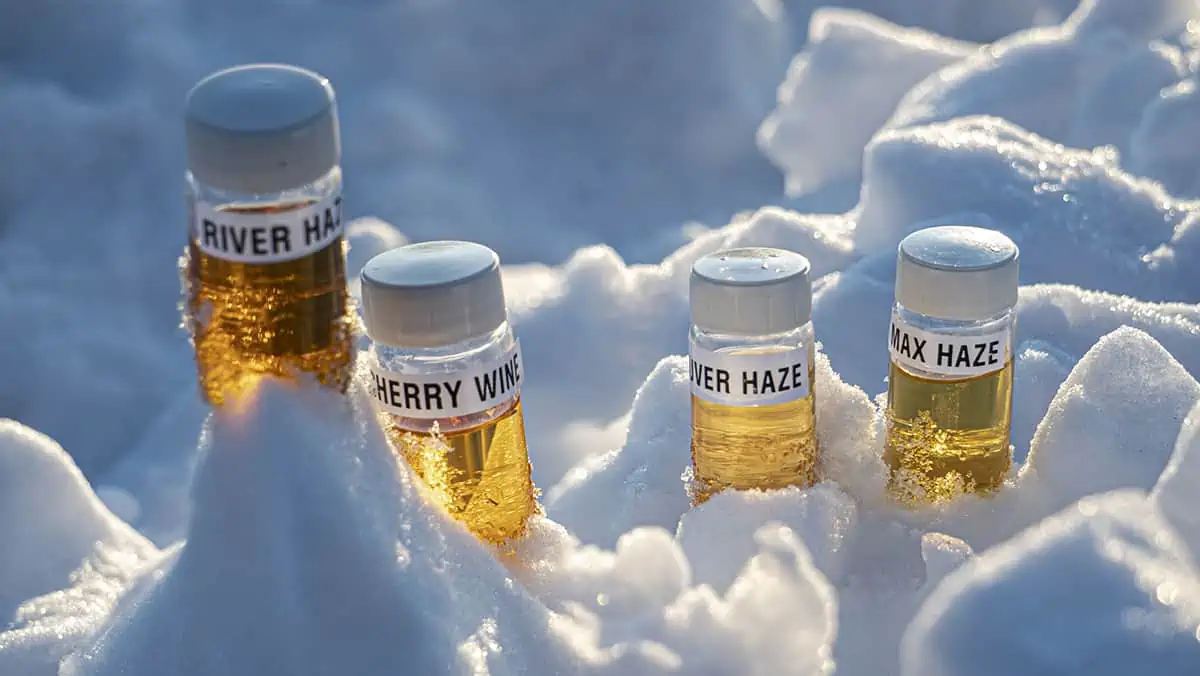
Can Ethanol Extractors Use CO2 for Stripping Hemp Terpenes?
Ethanol extraction typically destroys the terpenes when the ethanol is removed from the extract or is distilled from the winterized oil. Many ethanol extractors are seeking a way to preserve the terpene profile of the plant in the output oil. To this end people have tried techniques such as Steam distillation, CO2 stripping, and vacuum distillation.
Certainly, CO2 can be used to strip terpenes from hemp biomass prior to ethanol extraction. However, vacuum distillation is by far the most gentle and effective way to harvest the terpene profile prior to ethanol extraction.
Final Thoughts
No doubt, terpenes are as critical as the cannabinoids that accompany them, so terpene extraction is vital to a successful business. By following the extraktLAB method to terpene extraction, producers can rest assured that the terps they produce will be of the highest quality for wholesale or product formulation. And, while ethanol extraction can yield quality terps, it is our belief that supercritical CO2 extraction methods provide the best possible terpene yield – let alone the best possible CBD yield as well.
If you are interested in stepping up your extraction to the highest quality CO2 systems available, it’s time to reach out. Give us a call at 651-600-0036 or schedule a free am Session to speak with one of our knowledgeable representatives to identify your production bottlenecks and see how the extraktLAB solution fits into your business.
